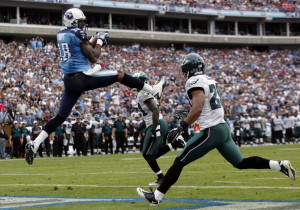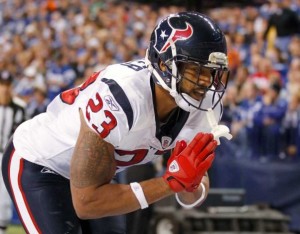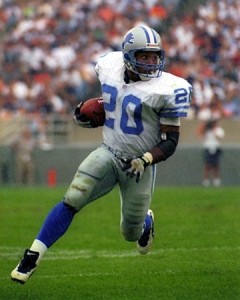In 2017, the Houston Texans lost their final six games of the season. Tom Savage started the first of those three games, with T.J. Yates starting the final three. This year, with Deshaun Watson back from injury, the Texans… lost their first three games of the season. So entering week 4, Houston was on a 9-game losing streak. Since then? Houston has won four straight, and with a home game against the Dolphins tonight, have a good chance of running that winning streak to five straight. With a win in Denver next week, the Texans would have followed a streak of 6+ straight losses by, immediately, winning 6+ straight games.
That’s pretty rare: only six teams have ever strung together back to back streaks of 6+ wins and 6+ losses. And if Houston runs the streak to 9 straight wins, the Texans would be the first team to ever have back-to-back 9-game streaks.
The longest streak? That belongs to the San Diego Chargers. In 1987, the Chargers lost the season opener, but responded by winning 8 consecutive games (including three with replacement players). And then San Diego promptly lost 8 straight games, marking the only time a team has ever had back-to-back 8-game winning/losing streaks. For those curious, a 36-year-old Dan Fouts was the starter for 5 of the games during the winning streak, and four of the games during the losing streak, which stretched into 1988.
Just two other times has a team had a 6+ game winning streak followed by a 6+ game losing streak. In 1977, the Don Coryell Cardinals began the season 1-3 before Jim Hart and crew went on a 6-game winning streak, bringing St. Louis’s record to 7-3. From that point on, the Cardinals lost their final four games of the regular season and the team’s first eight games of 1978 under Bud Wilkinson.
Finally, the 2001 Rams under Kurt Warner won their final six regular season games, plus the team’s two NFC playoff games, allowing St. Louis to enter the Super Bowl on an 8-game winning streak. The Rams lost to the Patriots in the Super Bowl, of course, and then began the 2002 season on a 5-game losing streak, with Warner the starter for all but the final game. And at 0-5, the Rams responded with a 5-game winning streak, then under Marc Bulger!
What about teams like the Texans, who followed long losing streaks with long winning streaks? There are just three of those teams, using 6-game minimums.
In 1970, the Cincinnati Bengals had one of the more interesting seasons in NFL history. With Paul Brown and Bill Walsh as offensive masterminds, the Bengals found a gem in Greg Cook to be the team’s quarterback in 1969. Unfortunately, Cook suffered what would be a career-limiting injury, and the Bengals brass turned the ball over to Virgil Carter. You know the story from there, as Carter, Walsh, and Brown helped usher the West Coast Offense into the NFL. After winning the team’s opener, Cincinnati lost 6 straight games, before going on a 7-game winning streak to end the regular season. The Bengals lost the team’s only playoff game.
In 1994, the New York Giants began the season 3-0, then lost 7 straight games, and then won the team’s final 6 games. Dave Brown was the team’s quarterback for all but one game.
Finally, we have the 1974 Jets, with a 31-year-old Joe Namath who managed to play every game that season. New York lost its first game, won its second game, and then won on a 6-game losing streak followed by a 6-game winning streak to end the season. From weeks 3 through 8, the Jets ranked 25th in passer rating and 17th in Net Yards per Attempt; during the final six weeks, the Jets ranked 3rd in passer rating and 3rd in NY/A.








